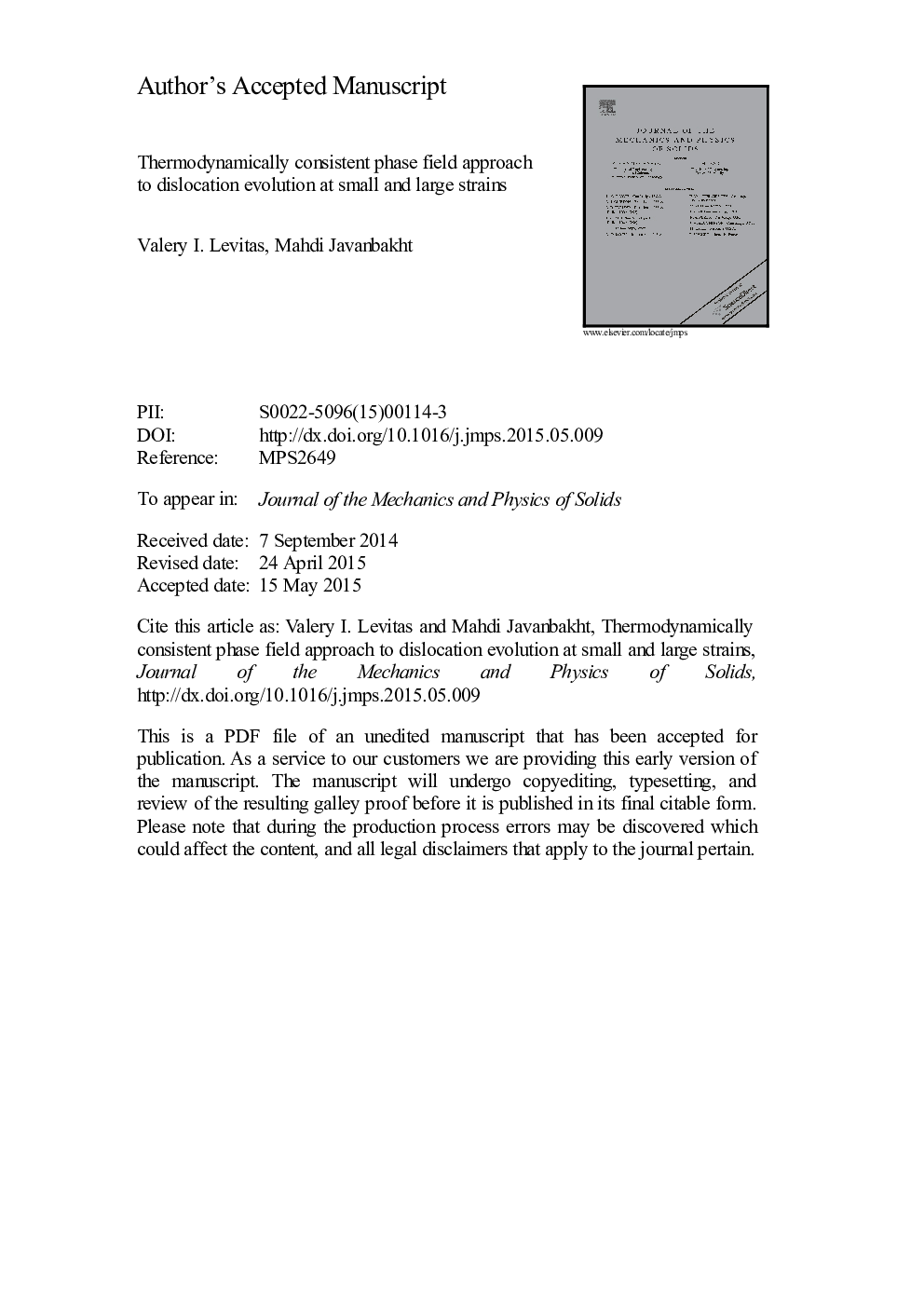| کد مقاله | کد نشریه | سال انتشار | مقاله انگلیسی | نسخه تمام متن |
|---|---|---|---|---|
| 7178010 | 1467061 | 2015 | 44 صفحه PDF | دانلود رایگان |
عنوان انگلیسی مقاله ISI
Thermodynamically consistent phase field approach to dislocation evolution at small and large strains
ترجمه فارسی عنوان
رویکرد میدان فازی ثابت به ترمودینامیکی به تکامل جابجایی در سویه های کوچک و بزرگ
دانلود مقاله + سفارش ترجمه
دانلود مقاله ISI انگلیسی
رایگان برای ایرانیان
کلمات کلیدی
رویکرد میدان فاز، جابجایی، سویه های بزرگ، نانومقیاس،
موضوعات مرتبط
مهندسی و علوم پایه
سایر رشته های مهندسی
مهندسی مکانیک
چکیده انگلیسی
A thermodynamically consistent, large strain phase field approach to dislocation nucleation and evolution at the nanoscale is developed. Each dislocation is defined by an order parameter, which determines the magnitude of the Burgers vector for the given slip planes and directions. The kinematics is based on the multiplicative decomposition of the deformation gradient into elastic and plastic contributions. The relationship between the rates of the plastic deformation gradient and the order parameters is consistent with phenomenological crystal plasticity. Thermodynamic and stability conditions for homogeneous states are formulated and satisfied by the proper choice of the Helmholtz free energy and the order parameter dependence on the Burgers vector. They allow us to reproduce desired lattice instability conditions and a stress-order parameter curve, as well as to obtain a stress-independent equilibrium Burgers vector and to avoid artificial dissipation during elastic deformation. The Ginzburg-Landau equations are obtained as the linear kinetic relations between the rate of change of the order parameters and the conjugate thermodynamic driving forces. A crystalline energy coefficient for dislocations is defined as a periodic step-wise function of the coordinate along the normal to the slip plane, which provides an energy barrier normal to the slip plane and determines the desired, mesh-independent height of the dislocation bands for any slip system orientation. Gradient energy contains an additional term, which excludes the localization of a dislocation within a height smaller than the prescribed height, but it does not produce artificial interface energy. An additional energy term is introduced that penalizes the interaction of different dislocations at the same point. Non-periodic boundary conditions for dislocations are introduced which include the change of the surface energy due to the exit of dislocations from the crystal. Obtained kinematics, thermodynamics, and kinetics of dislocations at large strains are simplified for small strains and rotations, as well.
ناشر
Database: Elsevier - ScienceDirect (ساینس دایرکت)
Journal: Journal of the Mechanics and Physics of Solids - Volume 82, September 2015, Pages 345-366
Journal: Journal of the Mechanics and Physics of Solids - Volume 82, September 2015, Pages 345-366
نویسندگان
Valery I. Levitas, Mahdi Javanbakht,
